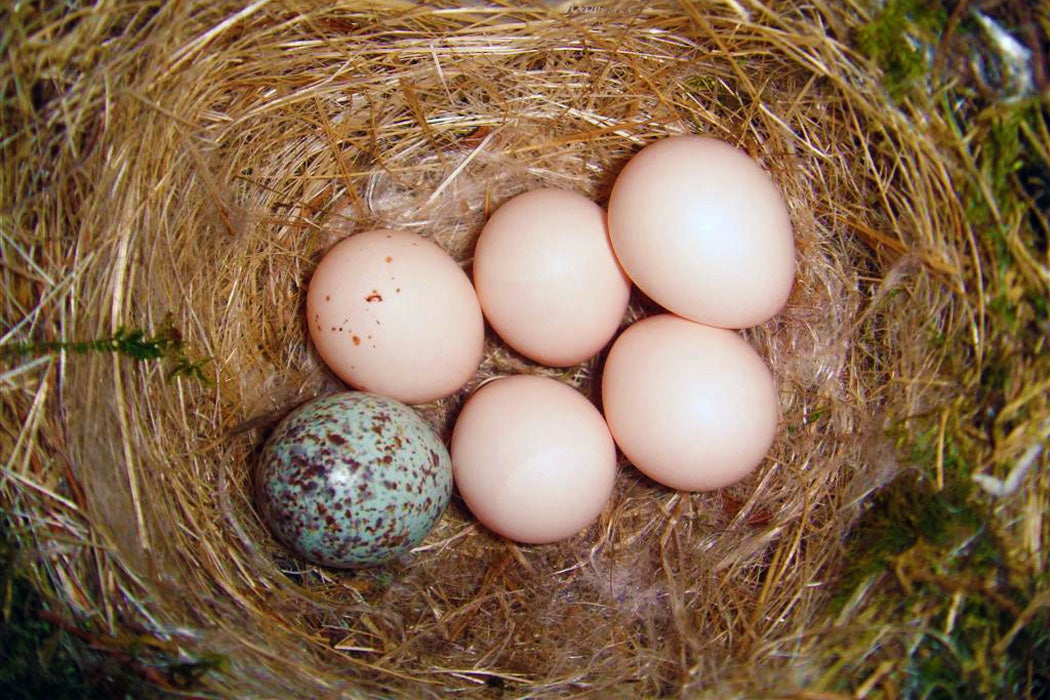Brood parasitism is a truly diabolical life strategy employed by certain birds, most famously cowbirds and cuckoos. Brood parasites make no nest of their own. Instead, they lay their eggs in another bird’s nest while the host bird is away. The impostor egg hatches, then often tosses all or some of the host eggs or babies out of the nest, killing them. The unsuspecting host parents dedicate their energy to raising the impostor chick. Oddly, they usually don’t seem to notice, no matter how significant the difference—as discussed by Oliver Krüger in Philosophical Transactions, cuckoos may lay eggs in nests of hosts up to six times smaller than they are. Sometimes, the chick dwarfs the hosts but the hosts diligently raise it anyway.
This sneak attack allows brood parasites to lay more eggs in one season than non-parasites, as they do not need to put any energy into building a nest or caring for offspring. The cost to the host, however, is enormous. They either waste energy caring for a parasitic egg, or in worst case the impostor kills every single host egg.
Hosts are not defenseless; brood parasites do not choose their victims randomly. Hiding nests better, for example, seems to be a deterrent in some cases, as does placing the nest so that there is no nearby place for a parasite to bide its time. Experience can help, in that young host birds are often more vulnerable. Sometimes the best defense is a good offense, many potential host species simply attack nearby brood parasites during breeding season. The downside, of course, is that while aggression may deter a parasite, it also lets the parasite bird know that a nest is near.
Weekly Digest
Once a brood parasite successfully infiltrates a nest, astute hosts will notice and damage or kill the parasite egg. In some cases hosts will even abandon the entire nest rather than raise a parasite chick. Some potential hosts lay homogeneous clutches of eggs to make parasite eggs stand out. Others are able to tell if one egg is much larger; they will kill the large egg. A related strategy is to stop feeding any chick when its needs become too great.
According to Krüger, this parasite-host struggle has the hallmarks of a co-evolutionary arms race. As host birds develop counter-measures, parasites develop new techniques for duping the hosts. When host defenses become too effective, the parasites might even switch hosts. Neither side is threatening the other with extinction, so the arms race stalemate drags on.







